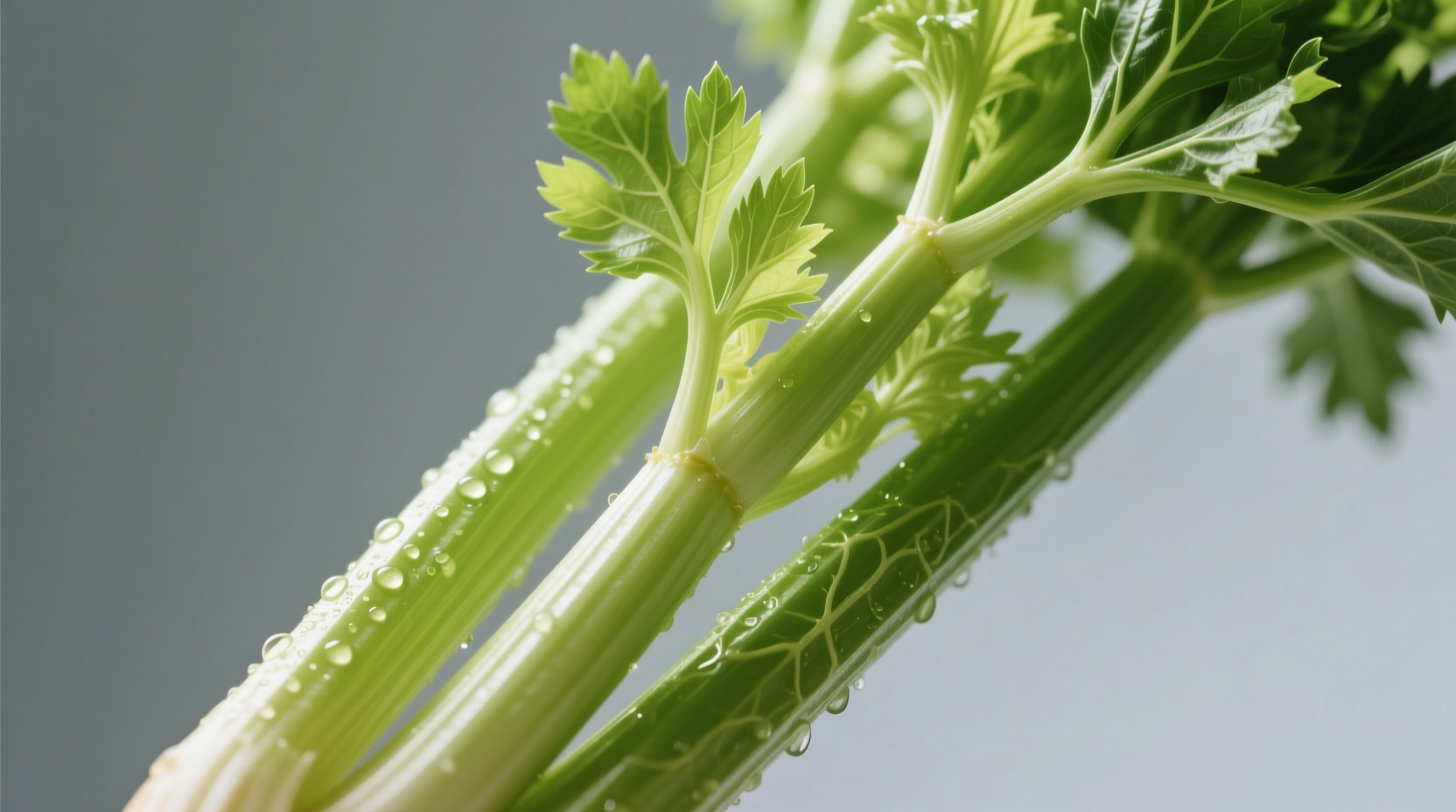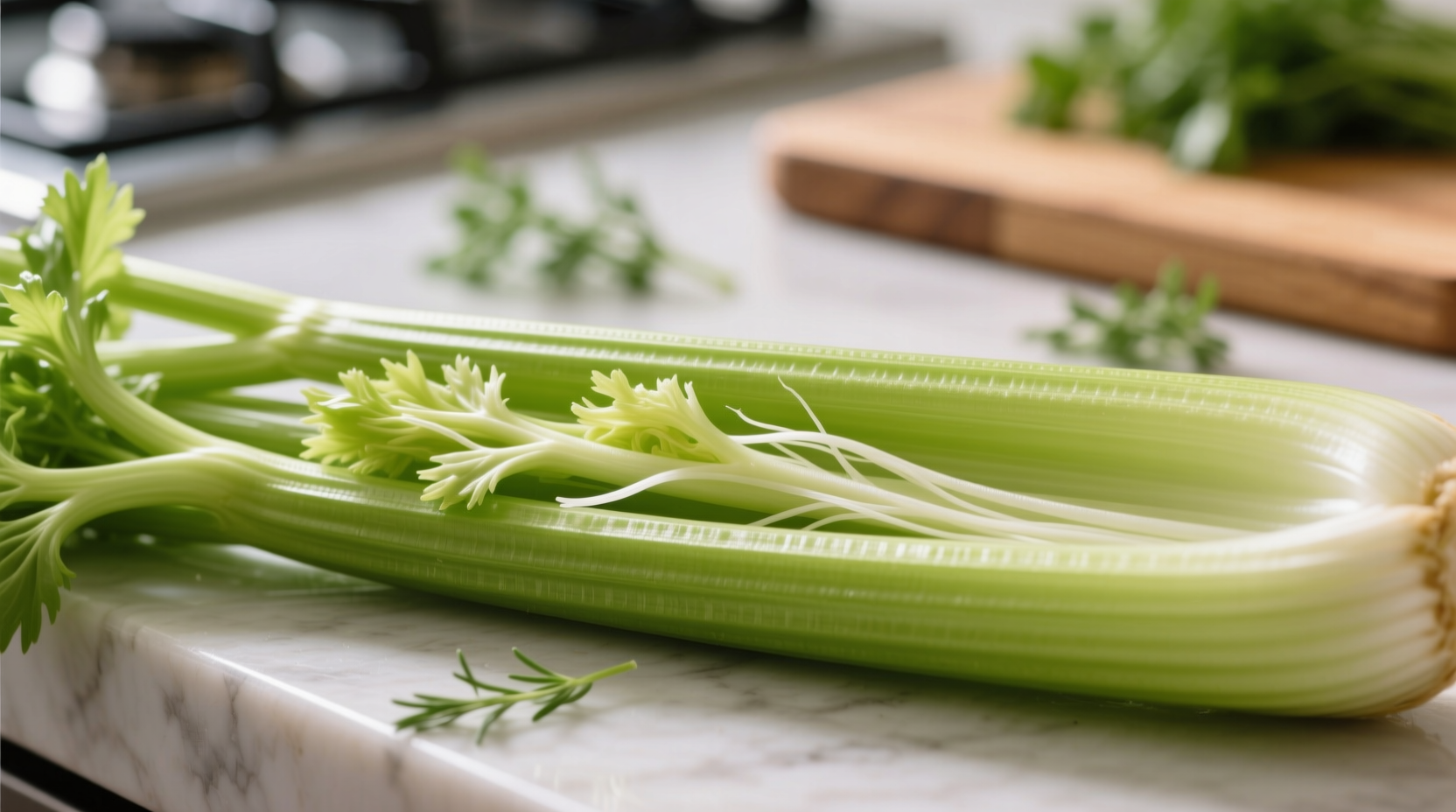Celery often gets overlooked in fiber discussions, but this crunchy vegetable delivers meaningful nutritional benefits that deserve attention. Understanding exactly how much fiber is in celery and how it impacts your health can help you make smarter dietary choices.
Breaking Down Celery's Fiber Content
According to the USDA FoodData Central database, a standard serving of raw celery provides:
| Serving Size | Total Fiber | Soluble Fiber | Insoluble Fiber |
|---|---|---|---|
| 1 cup chopped (100g) | 1.6g | 0.4g | 1.2g |
| 1 medium stalk (40g) | 0.6g | 0.2g | 0.4g |
| 2 cups chopped (200g) | 3.2g | 0.8g | 2.4g |
This nutritional profile shows that while celery isn't the highest fiber vegetable available, it contributes meaningfully to your daily intake, especially when consumed regularly as part of a balanced diet. The fiber in celery consists primarily of insoluble fiber (about 75%), which adds bulk to stool and promotes regular bowel movements.
Why Celery's Fiber Matters for Your Health
The fiber in celery works through several mechanisms to support your digestive system:
- Digestive regularity: Insoluble fiber in celery adds bulk to stool, helping prevent constipation and promoting regular bowel movements
- Gut microbiome support: Soluble fiber serves as prebiotic nourishment for beneficial gut bacteria
- Blood sugar management: Fiber slows carbohydrate absorption, preventing blood sugar spikes
- Satiety enhancement: High water and fiber content creates volume with minimal calories, supporting weight management
Research published in the American Journal of Clinical Nutrition confirms that increasing dietary fiber intake, including from vegetables like celery, correlates with reduced risk of cardiovascular disease and improved metabolic health. The National Institutes of Health notes that adequate fiber consumption is associated with a 15-30% lower risk of developing coronary heart disease.

Practical Ways to Maximize Fiber Benefits from Celery
Many people wonder how to get the most fiber benefit from celery. Here's what actually works:
- Eat it raw: Cooking breaks down some fiber structure, so raw celery preserves maximum fiber content
- Include the leaves: Celery leaves contain additional fiber and nutrients often discarded
- Pair with other high-fiber foods: Combine celery with hummus, nut butters, or in salads with other vegetables
- Consume consistently: Regular daily intake provides more benefit than occasional large servings
For optimal digestive health, the Academy of Nutrition and Dietetics recommends consuming 14 grams of fiber for every 1,000 calories in your diet. For most adults, this translates to 25-38 grams daily. While celery alone won't meet your entire requirement, incorporating 2-3 cups daily contributes meaningfully to your total intake.
How Celery Fiber Compares to Other Common Sources
Understanding where celery stands among other fiber sources puts its value in perspective:
- Broccoli (1 cup): 5.1g fiber - nearly triple celery's content
- Carrots (1 cup): 3.6g fiber - more than double celery
- Apples (medium): 4.4g fiber - significantly higher than one celery stalk
- Whole wheat bread (2 slices): 6.0g fiber - substantially more than celery
However, celery offers advantages beyond just fiber content. With only 16 calories per cup, it provides excellent nutrient density. The high water content (95%) combined with fiber creates significant volume with minimal calories, making it particularly valuable for weight management strategies.
Common Misconceptions About Celery Fiber
Several myths persist about celery and its fiber content:
- "Celery has negative calories": While celery is very low calorie, the thermic effect of food doesn't actually create a calorie deficit from digestion
- "Celery alone can solve constipation": While helpful, celery should be part of a broader high-fiber diet with adequate water intake
- "All celery fiber is the same": Fiber content varies slightly based on growing conditions, freshness, and whether you include leaves
The American Gastroenterological Association emphasizes that no single food provides complete fiber solutions. A varied diet incorporating multiple fiber sources yields the best digestive health outcomes.
When Celery Fiber Provides Maximum Benefit
Celery's fiber offers particular advantages in specific dietary contexts:
- For hydration-focused diets: The combination of high water content and fiber supports hydration while promoting regularity
- During dietary transitions: When increasing fiber intake, celery's moderate fiber content helps avoid digestive discomfort
- For weight management: High volume with minimal calories creates satiety without excess energy intake
- As a snack alternative: Replaces low-nutrient snacks while providing fiber and hydration
Registered dietitians often recommend celery as an ideal introductory high-fiber food for people new to increasing their fiber intake, as its moderate content helps prevent the gas and bloating that can occur with sudden large increases from very high-fiber foods.
Putting Celery Fiber in Context
While celery isn't the highest fiber food available, its combination of moderate fiber content, high water content, and versatility makes it a valuable component of a healthy diet. Incorporating celery regularly alongside other high-fiber foods creates a comprehensive approach to meeting your daily fiber needs.
Remember that fiber benefits work cumulatively - consistent daily intake matters more than occasional large servings. By understanding exactly how much fiber is in celery and how to incorporate it effectively, you can make smarter choices that support your digestive health and overall wellness.











 浙公网安备
33010002000092号
浙公网安备
33010002000092号 浙B2-20120091-4
浙B2-20120091-4